مخطط نظام تزويد حوض السباحة بالماء الخاص
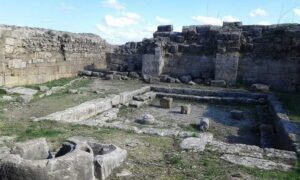

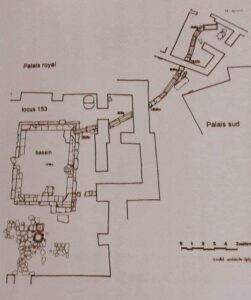







كتب سريانية منوعة
5.Syrische Grammatik mit Ubungsbuch 492.35-19 قواعد اللغة السريانية الصرف mshablono اطلس الكتاب المقدس وتاريخ المسيحية 0000 الأكادية في الآرامية النحو عند السريان_compressed (1) النصوص والصرف تاريخ-الادب-السرياني تعلم السريانية برصوم ايوب تعلم السريانية بلا معلم تعلم اللهجة الغربية عبارات أدبية قصة حياة القديس مار يوحنا ذهبي الفم قواعد عبد المسيح قره باشي قواعد اللغة السريانية للخوري نعمت كتاب 2 صغار كتاب الاطفال الأول كتاب سولوقو كامل – كتاب-علوم-سرياني1 لمحة عن المدرسة 2021 ܝܪ̈ܩܘܢܐ ܡܕܪ̈ܫܢܐ ܒܩܢܘܢ̈ܐ ܕܠܫܢܐ-V_2

قصة قصيرة عفوية بلا رتوش بعنوان (لغز الطاولة المستديرة رقم 6)
لغز الطاولة المستديرة رقم 6
في مطعم ككل المطاعم تسير الأمور كل يوم بأعتياد ولن تجد أي أختلاف عن غيره
لكن هناك فرق واحد حيث كل الطاولات فيه مربعة ومستطيلة بأستثناء واحدة دائرية
وتحمل رقم 6 ويحيطها 6 كراسي تحتل مكاناً مميزاً في المطعم للحقيقة تلفت أنتباه
كل من يدخل للمطعم وترتاعه الحيرة من وجودها الغير منسجم مع ديكور المطعم
ولكن لم يتجرأ أحد أو لم يرغب في معرفة السبب لأن هذا أمر شخصي و يعود لمالك
المطعم وليس الاغتراب في شكلها لكن هو لا يسمح لأحد أن يستخدمها طوال يوم
السبت وتكون محجوزة طوال اليوم والكراسي نائمة على حرف الطاولة تنتظر
أصحابها لتعيدها معتدلة كباقي الكراسي وعلى الطاولة الصحون والأكواب موضعة
متأهبة لتخدم ضيوفها والشمعة في وسطهم تشعل من الساعة السادسة مساء لمنتصف
الليل وفي اليوم التالي تعود ألأمور لحالها ويسمح للرواد باستخدامها مثل بقية
الطاولات واستمر الحال هكذا لشهور وسنوات ولا أحد يعرف السر في كل هذا.
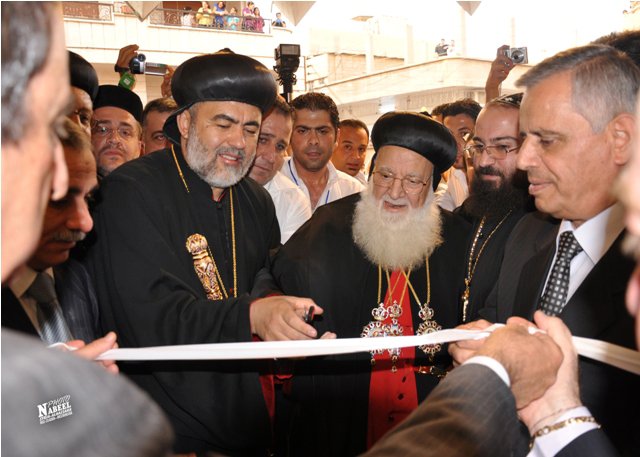


تحرير /عنكاوا كوم عن نيوز ويك
ترجمة \ريفان الحكيم
سعى الكتاب ان تكون مدوناتهم ذات مدى محدود دون ان تكون الرغبة بان تحظى تلك الافكار التي نقلوها سواء على المستقبلات المتاحة لاسيما جلد الحيوانات مناسبة لان تصل للاجيال اللاحقة لذلك بقيت بعض تلك النصوص مخبوءة امام اعيننا لرغبة تلك الشريحة من الكتاب ان يقوموا بمسح ما دونوه لغرض كتابة نص اخر على ما كان متاحا امامهم ورغم ذلك فقد دخلت التقنية الحديثة هذا المجال لغرض استعادة النصوص السرية كما داب العلماء في مختبر الولايات المتحدة للطاقة في ولاية كاليفورنيا ليجروا ابحاثا مكثفة شهدها ( ستانفورد ساينكروترون للاضاءة (SSRL) ) حيث بدا فريق الابحاث جهوده بتحليل صفحة لم تكن مسبقا قابلة للقراءة كجزء من المقدمة.
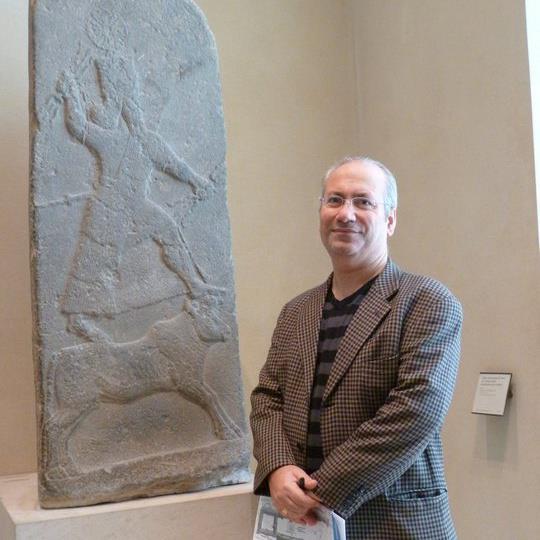
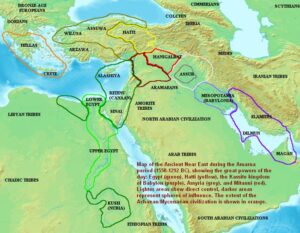

الآثار التاريخية للثقافة السريانية، والتي لديها بنية فريدة من نوعها في مجالات الفن، والحِرف، والهندسة المعمارية، والفنون الشعبية والاقتصاد؛ من الممكن رؤيتها في مناطق مثل أنطاكيا وإسكندرون وأضنة وملاطية وأورفة وإيلازيغ وأديامان وديار بكر وماردين وفان وباتمان وهكاري وسيرت وشرناق (في نواحي تركيا).وفي بلاد الشام وبلاد الرافدين. تحتوي الثقافة السريانية العادات والطقوس التي تتمحور حول الإنسان والتي تطورت بناءً على هذه الثقافة سمات فولكلورية غنية. من خلال هذا البناء، ساهمت دائمًا في التنمية الاجتماعية والثقافية للمنطقة.

Syriac Culture and Its Future Perspective
The historical traces of Syriac culture and its unique structure in the realm of art, crafts, architecture, folklore, economy can be seen in different regions of Turkey such as Antakya, İskenderun, Adana, Malatya, Urfa, Elazığ, Adıyaman, Diyarbakır, Mardin, Van, Batman, Hakkari, Siirt and Şırnak. Syriac culture and the people-centered customs, conventions and rituals that developed within it contain rich folkloric attributes. With this structure, it has always contributed to the sociocultural development of the region.
Shaped by the input of Ancient Mesopotamian culture, Syriac culture has gone through a transformation unique in form and content by passing through a new melting pot of understanding as a result of the fermentation of elements taking shape in tandem with the birth of Christianity. Thus, the main source of reference has evolved into a feeling and sensitivity for the Word of the Lord and moral norms. By historically experiencing and comprehending the truth that, “Humans are human when they act righteously toward God and truth, and morally toward creation,” the masters of pen and word of this culture have left us a rich literature and unlimited inheritance, and with spiritual awareness, they have served the development of social thought.
In this context, famous social scientist Malfono Yuhanun Bar Adi (893-974), who considered a life lived in ignorance wasted and continually searched the sciences for immortality is only one of these historical masters and personalities. Malfono Yuhanun Bar Adi suggests that people develop a rational style within the frame of individual wholeness which forms the basis of public morality. In this context, he says, “With intelligence and wisdom, people must incrementally avoid their bad habits, master their desires and carnal cravings, and try to reach the highest level. In order to do this, they must learn the rules and policy of ethics and morals, and try to form relationships with the wise.”
In expressing that people can find goodness depending on the decisions and choices they make, he says, “Humanity must make an ethical rule of continually reading books written on the subject of morality. Humans must analyze works penned on the subject of morality, the politics of morality, and behavior. They must use the things prescribed by elevated figures, and apply what has been deemed worthy of application by the ancient wise ones. They must learn at least a little of the art of writing and critical thinking, they must equip themselves with grace and eloquence, and finally they must continually raise prudent and respectable individuals by staying in touch with scholarly and wise people.”
As one can gather from the prescriptions of Malfono Yuhanun Bar Adi, who was raised in the Syriac tradition, Syriac culture, with its unique and important past in the broader history of civilization and humanity has an outreaching character in the social, religious, economical sociocultural life of the region. Throughout history, Syriac has served as a major bridge in intercultural interaction. This culture has contributed to the development of East-West thought, civilization, philosophy and moralism. This breakthrough in the realm of thought has reached the Arab world as well as Europe. Its role and impact on transfer of antiquity to the Islamic world is undeniable. It gains prominence with its important contributions primarily to the Arabic language and Islamic philosophy. As an autochthonous culture of our geography, it has strived to continually contribute to common life with an understanding that sees responsibility as a virtue. By aspiring to live and let live, it has always prioritized active altruism, social peace, and solidarity. It has encouraged a culture of coexistence, cooperation, peace, prosperity, and stability. Because this culture is not just a remnant of the past, it is also the inheritor of the values that add different meanings to the pluralistic identity of the region. With its existing churches and monasteries, with its centers of science and knowledge, it still makes important contributions to economic development and national and global recognition of the region. However, though this is the situation regarding this rich cultural heritage, it has also been dragged into a subaltern position that unfortunately breeds apathy. Despite all of its positive roles in history, though it was one of the fruitful vessels that sustained Eastern culture, through historical events, sociopolitical conflicts it has shriveled and dwindled into a well in need of support and care. Actually, this passive and sterile situation is the kaleidoscopic continuation of older periods, historical changes and event. Although the continuation and protection of this culture, which is a part of Turkey and the universal heritage of worldwide scope, depends on many components, the priority is its further recognition, comprehension and adoption in its own native land. And this is only possible by creating awareness of new concepts that will expand social perception. To quote a wise saying, “Awareness is the mother of orphan knowledge.”[1]
In other words, the main purpose here should be to sustain and strengthen this ancient culture which carries over the spirit of Ancient Mesopotamia with its lost and veiled elements. There is a need for different efforts so that this spirit is not extinguished. Protecting, adopting, and passing on this culture to future generations should not just be the responsibility of those who bear it and love it. Every individual who bears responsibility towards humanity and universal culture should be sensitive to the matter of its preservation. The comprehension of the spirit carried by this ancient culture in the historical background is directly proportional to its being uniquely recognized, known and adopted. Therefore, the sensitivity displayed and scientific studies performed by the local governments and universities in this culture’s land of origin will fulfil the function of watering a withering tree, so to speak. Therefore, the existence and future perspective of this ancient culture should advance in parallel with the new alternatives that will be developed with human touches and positive approaches that spring from affectionate awareness. If the current situation is cured through sociocultural and scientific methods, not only will the evident apathy and passivity evolve into a positive course of events, it will also turn into a daily growing interest. It is certain that this situation will contribute to the cultural interaction of the pluralistic makeup of the region.
Under present conditions, since gaining a strong foothold in the global climate starts with the local and with differences, the meaning that this strengthening will carry for the region and country is self-evident. Because when it comes to Syriac culture, the Mardin region is pretty much like a social laboratory. In this geography, Syriac is still used as the language of both the church and the people. It is obvious that appreciating and supporting this globally compelling value with concrete efforts will uniquely contribute to the socioeconomic, sociopolitical and sociocultural processes of the region.
On the other hand, the bearers of the light of knowledge also have responsibilities towards life and humanity. Under our present-day conditions where means and end are often confused, the greatest good one can pass on to the future is contributing to people’s development and transformation. And the method of doing this no doubt lies in cultural and scientific studies.
In the context of unity in production and contribution to activities, it can be said that, “If someone throws manure at you, cast some seeds on it.”
Success must be the only option. Only with this belief can we reach the sincerity of our spirit. When the good seeds cast into the future, though lacking, are sincere, they are certain to have an impact. Because every contribution made with sincere effort towards the benefit of the culture will come back with its blessing. By contributing to cultural and scientific studies, people benefit themselves before they do others. Taking goodness by the hand means positive energy and power. If goodness does not get up, the march cannot continue. As a result of the latest scientific studies, it has been recognized that even a small favor brings a certain peace and joy to the person’s heart, and leaves positive impressions both on the person doing the favor and the one receiving it.
Do not forget that all cultures speak of the mystery of humanity. However, people who do not return to their source and essence are doomed to being destroyed. No society can survive for long with a way of thinking that does not originate from its own essential culture. Only if every society develops a way of thinking that derives from its own essential culture and interacts with the universal, will social cohesion and social peace find meaning. This way of thinking must develop into a form of contact that serves social justice, peace, equity, mutual nourishment, and coexistence rather than asserting one’s own dominance or destroying others. For everything in the universe is useful as long as it furthers the understanding of the meaning of life.
Striving to preserve an ancient spirit like the Syriac culture, nourishing the courage of those who labor for this cause will be an important and meaningful contribution on behalf of future generations. Because the spirit cannot survive without its hope. A tree only survives by its roots. If the roots dry up, the entire trunk will suffer. In that case, the roots must be watered; they must not be abandoned to hopelessness in a way that will conduce to positive motivation. Literature should be prioritized and supported with new contributions. Because in the civilized world or in the developed societies which have grasped the meaning of life, it is one of the basic indicators of the lust for life. In that case, cultivating every new seed cast into the field of culture, which is also recognized as a rational capital asset, and nurturing said seed at various stages must be a basic responsibility, and all efforts pertaining to this must be indiscriminately supported.
Yusuf Beğtaş
Syriac Language-Culture and Literature Association / Mardin
[1] In Syriac literature, existing but undiscovered knowledge is called “orphan knowledge.” The moment we discover any new knowledge and begin applying it, it is no longer orphan knowledge for us. Therefore, discovering is more important than knowing. If a person is unaware that they know, that knowledge is useless.